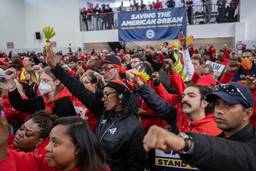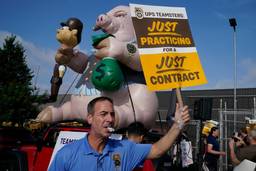
The new census figures dumbfound me. What’s happening to black families?
Countless news reports, based on the latest U.S. Census data, tell me that there’s a massive black migration underway.
They tell me that the black population in the South has swelled, as mostly young and better educated blacks are leaving big cities in the North and the Heartland for new and better chances. So, too, many more blacks are moving out of the cities and to the suburbs, the news reports also say.
This sounds good, yes. So why am I baffled?
When I look at recent U.S. Labor Department numbers, I see that one out of every four black families last year had no one employed — compared to one out of every 10 white families. And the situation worsened for blacks in 2010.
Looking around Chicago, where the black population has shrunk in the last decade, I wonder who left, and who’s left behind. Was it only the black middle class? And where did they go?
In the last decade, poverty in Chicago grew by 6.1 percent overall. But there was a 30-percent growth in the 22 out of 29 black neighborhoods where there was an increase in poverty.
Consider the latest U.S. unemployment figures released on April 1. Black unemployment continued to grow while white joblessness declined, and the jobless rate for black teens was nearly twice the rate for white teens. (All these figures are available here.)
So, here’s my problem.
If joblessness is as severe as ever nationally for blacks, and if poverty is climbing upward here in Chicago and elsewhere, maybe some of this migration is really poor people racing to find a better place down South or out in the burbs.
But poor people don’t pick up and start over so easy. If they are leaving the big cities, they are probably headed for the first place they can afford. And that may not be much better than what they left behind.
And maybe the shift to the ‘burbs is not the long-denied arrival of black families either in the vaunted middle-class suburbs. Maybe it is the arrival of middle- and working-class blacks, suffering from housing and other financial losses: struggling families who have pinched everything to afford older, low-valued homes in the nearest suburb across city lines.
After all, the major form of wealth for most black families is their house, and the housing collapse has most cruelly cut into the worth of houses in black communities. Sub-prime lenders targeted black communities, drawing in middle-class blacks.
Doesn’t this mean that the concentration of poverty in large cities like Chicago is even greater than before?
And won’t caring for those left behind became more difficult because there are fewer jobs, less job training available, and less money filtering down from on high because local and state governments went broke?
That’s what baffles me. I look. I listen and I see more heartbreak, not less.

I hope you found this article important. Before you leave, I want to ask you to consider supporting our work with a donation. In These Times needs readers like you to help sustain our mission. We don’t depend on—or want—corporate advertising or deep-pocketed billionaires to fund our journalism. We’re supported by you, the reader, so we can focus on covering the issues that matter most to the progressive movement without fear or compromise.
Our work isn’t hidden behind a paywall because of people like you who support our journalism. We want to keep it that way. If you value the work we do and the movements we cover, please consider donating to In These Times.
A former labor writer for the Chicago Tribune, Stephen Franklin is a Pulitzer Prize finalist and an adjunct professor at the University of Illinois Urbana-Champaign School of Labor and Employment Relations.






